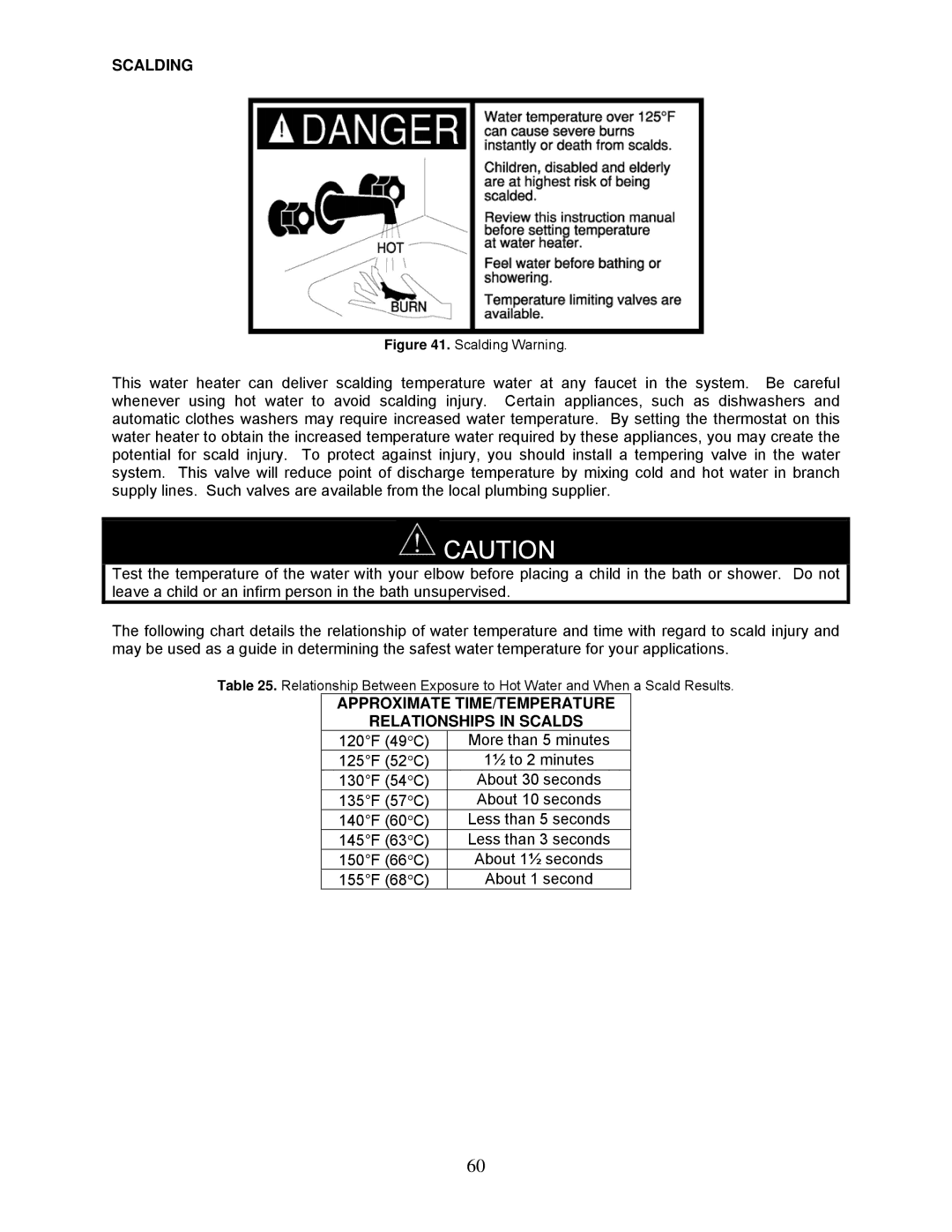
SCALDING
Figure 41. Scalding Warning.
This water heater can deliver scalding temperature water at any faucet in the system. Be careful whenever using hot water to avoid scalding injury. Certain appliances, such as dishwashers and automatic clothes washers may require increased water temperature. By setting the thermostat on this water heater to obtain the increased temperature water required by these appliances, you may create the potential for scald injury. To protect against injury, you should install a tempering valve in the water system. This valve will reduce point of discharge temperature by mixing cold and hot water in branch supply lines. Such valves are available from the local plumbing supplier.
![]() CAUTION
CAUTION
Test the temperature of the water with your elbow before placing a child in the bath or shower. Do not leave a child or an infirm person in the bath unsupervised.
The following chart details the relationship of water temperature and time with regard to scald injury and may be used as a guide in determining the safest water temperature for your applications.
Table 25. Relationship Between Exposure to Hot Water and When a Scald Results.
APPROXIMATE TIME/TEMPERATURE
RELATIONSHIPS IN SCALDS
120°F (49°C) | More than 5 minutes |
125°F (52°C) | 1½ to 2 minutes |
130°F (54°C) | About 30 seconds |
135°F (57°C) | About 10 seconds |
140°F (60°C) | Less than 5 seconds |
145°F (63°C) | Less than 3 seconds |
150°F (66°C) | About 1½ seconds |
155°F (68°C) | About 1 second |
60
